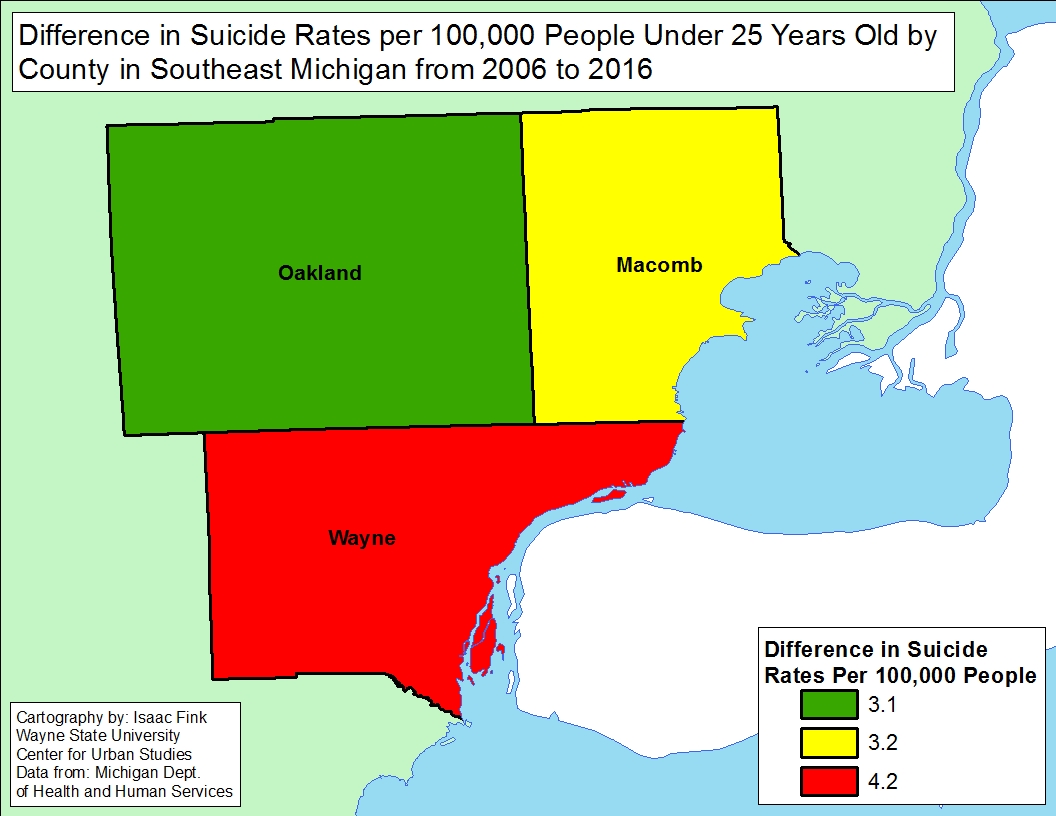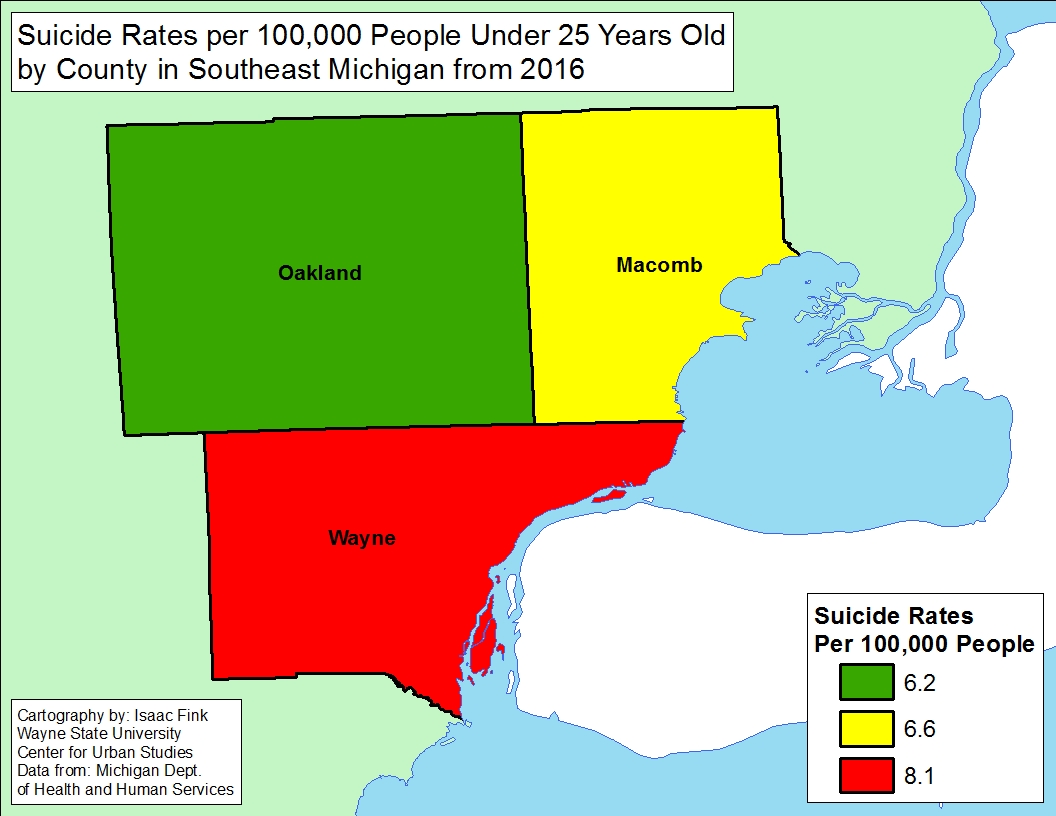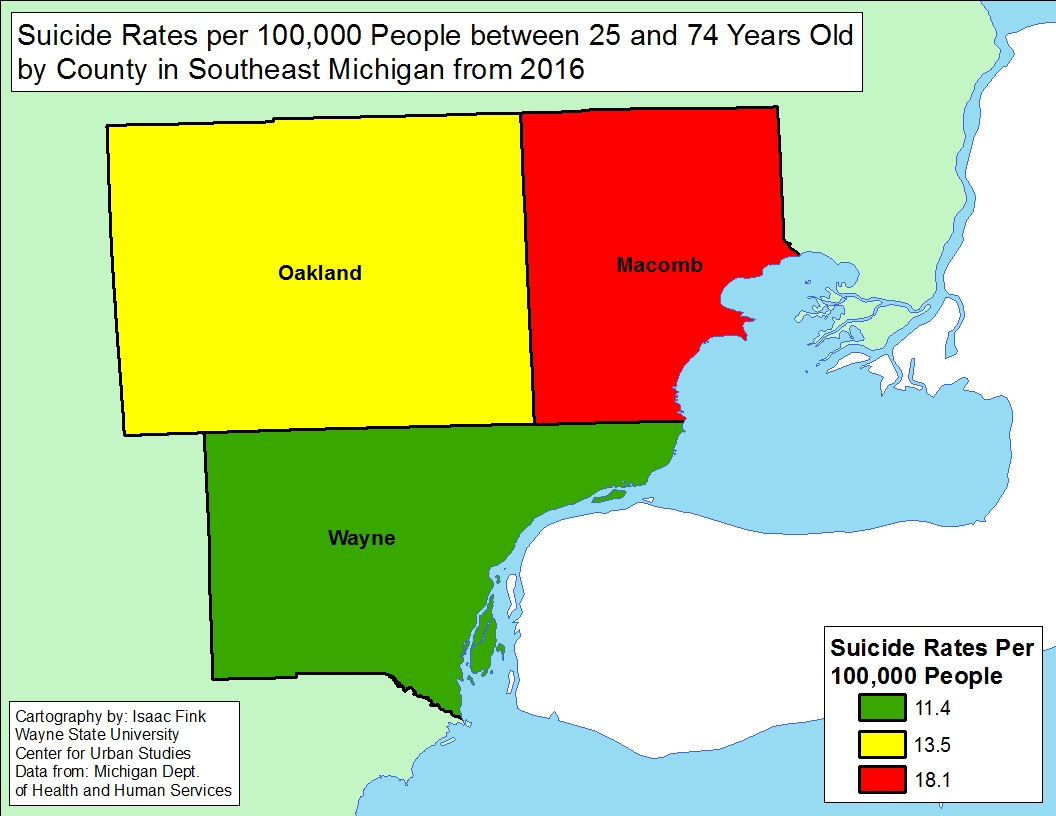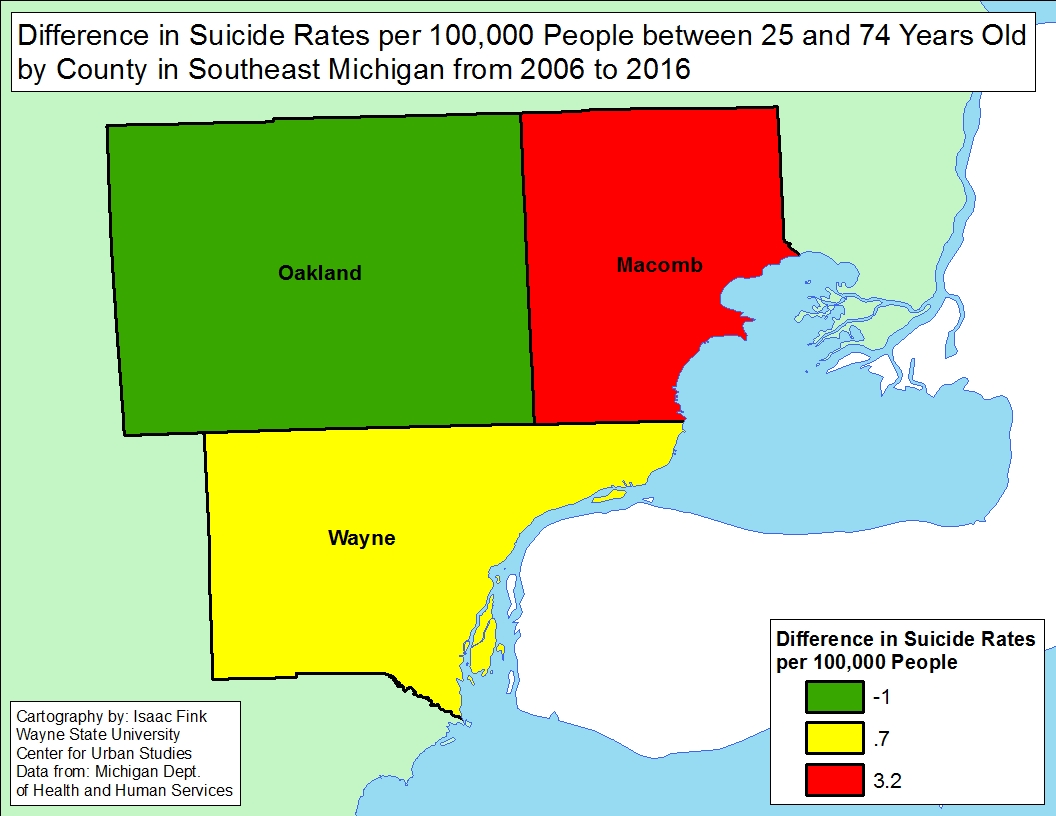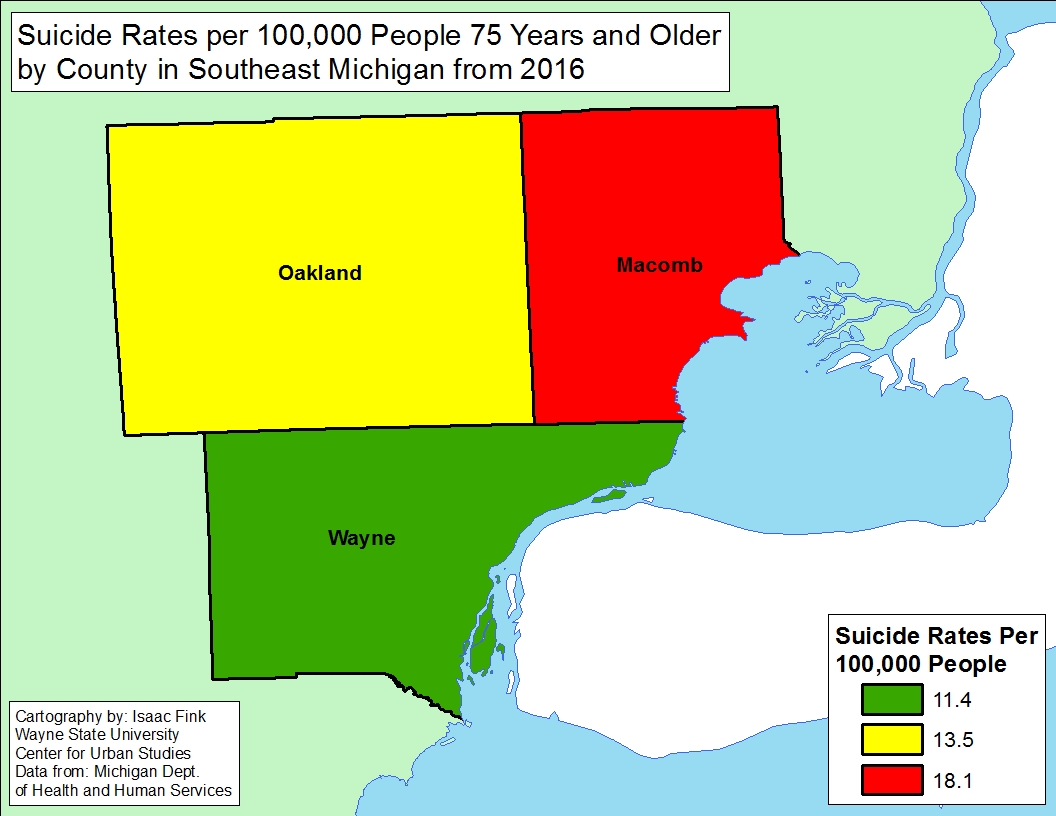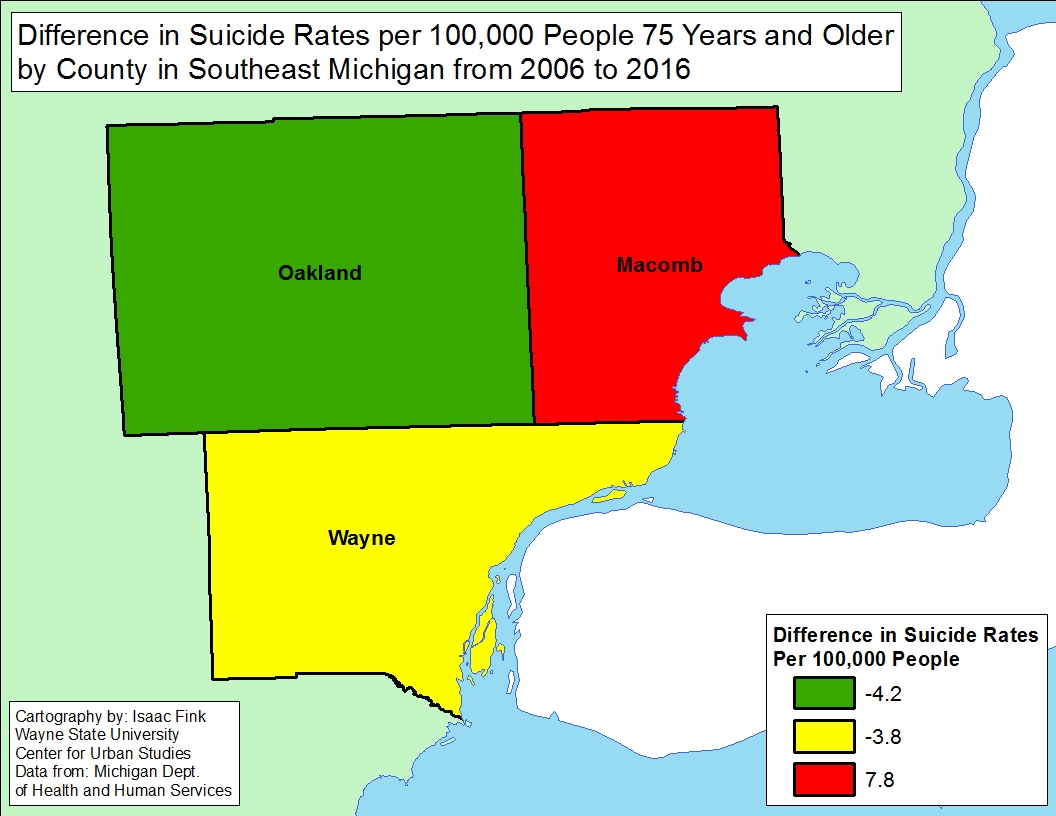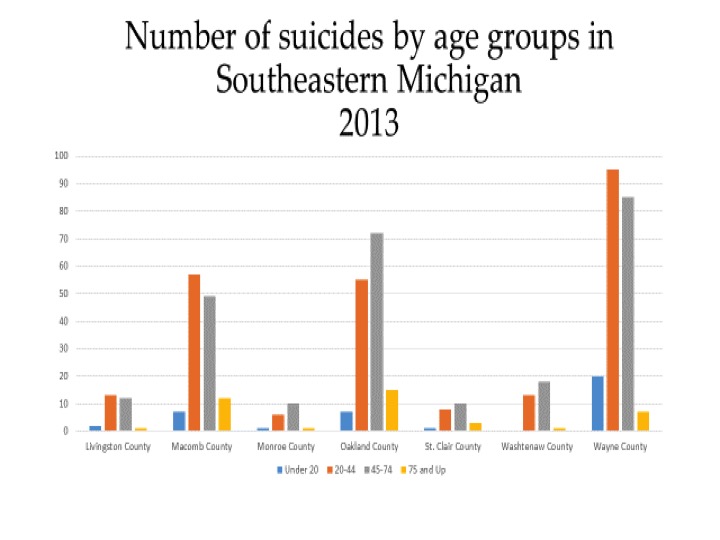Suicide rates in the State of Michigan have been increasing, and data from the Michigan Department of Health and Human Services shows that suicide rates in Macomb, Oakland and Wayne counties have contributed to that increase. Between 2006 and 2016, Macomb County experienced the highest increase for all ages at a rate of 3.2 per 100,000 residents. Macomb County went from a rate of 10.2 in 2006 to 13.4 in 2016. In 2016 the suicide rate in for Oakland County was 11 per 100,000, a slight increase in the rate of 0.2. For Wayne County the rate was 11.9 per 100,00, an increase in the rate of 1.8. All three counties had a lower suicide rate in 2016 than state’s rate of 13.5 per 100,000.
Data for Livingston, Monroe, St. Clair and Washtenaw counties is not used in this post because it was only reported on a 5-year-average from the Michigan Department of Health and Human Services and this data is reported on an annual basis.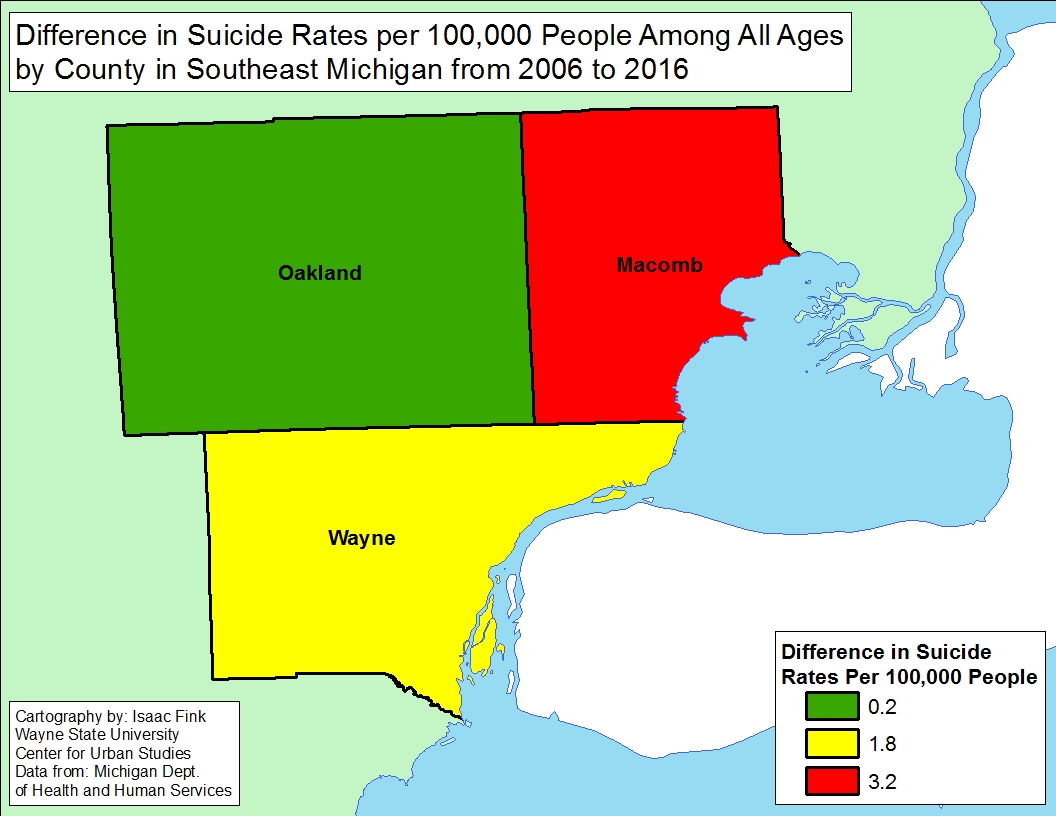
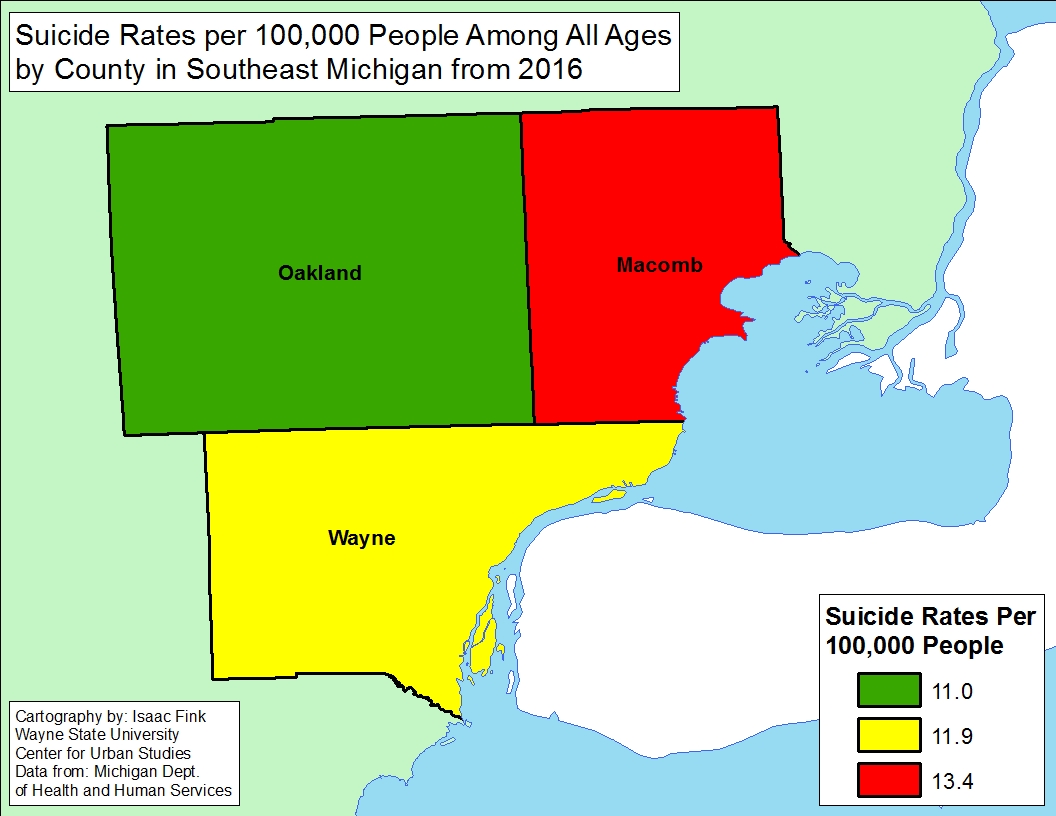
While the under 25 years of age population had among the lowest suicide rates of the age categories examined in this post, it did have the highest rate increases of the categories between 2006 and 2016. For the State of Michigan in 2016, the suicide rate for those under the age of 25 was 6.9 per 100,000 resident; this was an increase of 3.4 from 2006. Wayne County was the only county of the three (Wayne, Oakland and Macomb) with a higher suicide rate for the 25 and under population than the State of Michigan. According to the data, Wayne County’s suicide rate for the under 25 years of age population was 8.1 per 100,000 residents, an increase in the rate of 4.2 from 2006. With a rate increase of 4.2, Wayne County also had the highest rate increase in the tri-county region.
For the 25-74 years of age population, the suicide rate in the State of Michigan was 17.1 per 100,000 residents. Macomb County was the only county in the tri-county area with a rate higher than the state’s. The Macomb County suicide rate was 17.5 per 100,000 residents, a rate increase of 3.2 from 2006. Oakland County was the only one to experience a rate decrease for the 25-74 years of age population between 2006 and 2016. The rate decrease for Oakland County during that time period was -1 per 100,000. Oakland County’s suicide rate for the 25-74 year population was 13.9 per 100,000 residents in 2016.
For the 75 years of age and older population, Macomb County was again the only one in the tri-county region with a rate above the State’s. In 2016, Macomb County’s rate was 18.1 per 100,000 residents and the State’s was 16.4 per 100,000 residents. Macomb County experienced a rate increase of 7.8 between 2006 and 2016 while the State experienced a rate increase of 2.3. On the other hand, Oakland and Wayne counties both experienced rate decreases between 2006 and 2016. The suicide rate decrease for the 75 years of age and older population for Oakland County was 4.2 and for Wayne County it was 3.8.
Over the last 20 years, according to a recent Center for Disease Control study, the suicide rate in Michigan has increased about 33 percent, which is slightly higher than the national increase during the same time frame. That report further states that more than 20 percent of individuals who commit suicide have no known history of mental health conditions. Rather, substance abuse and relationship issues are often cited as factors.
